#The History's Section
Explore tagged Tumblr posts
Text
*white knuckling the bathroom sink* do NOT infodump ppl about the fact that the first spn fic was a wincest one and that it was posted mere hours after the pilot and that the founder of ao3 was a wincestie and that the first fic on ao3 was wincest too and that the omegaverse as we know it was created by wincest shippers for jared/jensen fics *pointing at myself in the mirror with a shaky hand* ppl will think you're weird and off-putting you need to control yourself–
#I had to control myself on a tiktok comment section and not correct anyone's incorrect takes.... I'm god's bravest little soldier#wincest history#⚝#fandom history
32K notes
·
View notes
Text
I know this isn’t a novel observation but I’ve been reading a lot of articles about colonial and imperial policy (specifically demography history papers) & one pattern that keeps coming up is that colonial/imperial governments try to institute what can reasonably be described as “good” social policies in colonised places (like vaccine programs, funding for schools, etc, things that are associated with the smooth functioning of a state), and these are often rejected by local colonised governments and people because like obviously they don’t trust colonial/imperial administrators wanting to become involved with their healthcare or education. And what often ends up happening is this backlash against “progressive” policies because they’re being pushed by colonial governments, so you get shit like the Catholic Church running all the primary schools in Ireland because they refuse to open British-funded state schools, or people refusing to immunize their children because those “public goods” are (rationally & understandably) associated with things like US imperial population management programs. And then these colonial & imperial administrators turn around and say look! These people won’t even accept money for schools and vaccines! Look how backwards they are! And paint colonised populations as Great Rejectors of Democracy which western populations then readily eat up. Just a really horrendous feedback loop of misery that generates a lot of ‘secondary’ death and violence on top direct colonial oppression and plunder
#book club#but they were describing the history of schools in Ireland in the background section. Not good
6K notes
·
View notes
Text
General question to reblog and tell me in the tags;
You go into a used bookstore - what are the two sections you head to first?
11K notes
·
View notes
Text
forever thinking about that part in people love dead jews about how it's a myth that the workers on ellis island forcibly changed people's last names and most jews just petitioned in court to have their names changed because of all the antisemitism that came with being identifiably jewish.
specifically, i'm thinking of this one guy called louis goldstein who was talking about how his name is a curse and it's impossible to live a good life in the united states while being called louis goldstein, except the judge was also called louis goldstein and was like "hey excuse you what the fuck"
#louis goldstein on louis goldstein violence#there was genuinely a ton of housing and employment discrimination#so having what people could identify as a jewish name did (and for many still does) make life harder#the section is mainly a reflection on why this has gone down in the historical memory as name changes being imposed#but the louis goldsteins live rent free in my head#antisemitism#jewish history#people love dead jews#jumblr
592 notes
·
View notes
Text






Some photos I took in Parisian second-hand bookshops this week.
#i bought five hundred books#or at least that's how it felt as i was hauling my suitcase up and down stairs in the métro#i liked how in one bookshop the shelves in the history section were labelled 'Pre-Revolution - Revolution - Post-Revolution'#bringing back the revolutionary calendar but discreetly.
591 notes
·
View notes
Text
I love libraries.
I'm browsing the WWI shelves (as you do) and notice a very old book about the war. I glance at the first pages that talk about how one day the war will be over and we'll look at this place and not see any signs of the battlefield.
Then it hits me. And I check the publishing date.
This book was printed before the war's end. Not written. Printed. The physical object was created in 1918, while the war in question was raging and the end was as yet uncertain.
Now I'm standing on the other side of the apocalypse, with this physical link to that era in my hands. I'm living proof that the war did end and life did go on and we can all look at the end of the world as a long-ago memory.
Reading old books is cool enough, connecting our minds and hearts through the ideas of people who lived long ago, but there's something extra profound about holding a copy of the book that comes from the time that it was written. It's a physical link between the past and the present connecting me to those long-ago people. A piece of the past come into the future that gives me the chance to almost take the hand of some long-ago reader, to hold something they could have held, connecting not just mentally but physically to their era, a moment of connection across more than a century.
Excuse me while I go weep.
#books#history is awesome#of course i checked it out#i had no real intent to read wwi non-fic but i couldn't just leave my new friend there it'd be lonely#i want to break out in tears every time i look at it#it's so stupid but sometimes something stupid just kicks you straight in the heart and you just gotta deal#it's old front line by john masefield#i know nothing about it except thinking the author's name sounded vaguely familiar#also the interior design is fantastic#these old books know how to use white space and make something super readable#if you must know i was in the wwi section because i was at the history museum the other day#and saw a local author had a book of wwi letters#thought i'd see if the library had it#looked at the selection of non-fic surrounding it and thought of the wwi persuasion#saw many books that could be useful#and thought 'oh no this looks like fun'#it won't go anywhere i know i won't be able to focus long enough to do real research#but darn if it wasn't an appealing little daydream
1K notes
·
View notes
Text
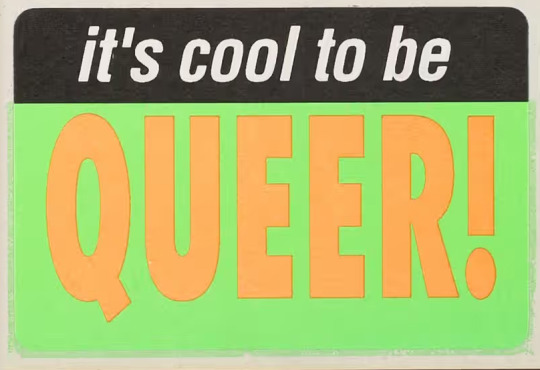
Outrage! sticker, 1991
#cool#outrage#queer nation#act up#queer history#sticker#activism#paragraph 16#section 28#homophobia#queer#lgbt#lgbtq#lgbqti#1991#1990s#90s
3K notes
·
View notes
Text
in which i tell you about medieval timekeeping methods
ok we gotta start with BABYLONIAN TIME and SUNDIALS because this is the Foundation. this is what they used for thousands of years. pretty much every structure we have for understanding and conceptualizing time is based on The Movements Of The Universe - years, months, days, this is how we understand Time to pass. the sun and stars were used for keeping time since Always!!!! there were also multiple ways of keeping time with the Shadows of the sun, not just sundials, but also tablets to measure the length of shadows. And Such
BABYLONIAN TIME is twelve hours daylight, twelve hours nighttime. this makes very good sense considering Sundials, you just split the indicators into twelve parts. don't know why Twelve specifically other than that the babylonians liked it, but it is a very nice, divisible number, and its been kept as the base for all the hour keeping systems i've read about so far.
but yes this does mean that a babylonian hour does not have a set, static length like a modern hour does...! it changes with the seasons and the place, so a babylonian winter hour is different from, say, a winter hour in northern norway. it probably helps to be closer to the equator and reliable sunny weather.
until the invention of mechanical escapement clocks, babylonian time was The main, foundational understanding of timekeeping, BUT...!!!!!! the church put a spin on it. what the monasteries needed to keep time for was Prayer Times, which they had seven of and were based on the passion of the christ. so they signaled the Seven Canonical Hours, starting at sunrise, ending at sunset. church bells is also how people kept time, because you could hear them out in the fields. timekeeping was a bit of a wibbly wobbly art but accuracy wasn't That important.
the various methods used to keep time in addition to sundials included: the cock's crow, candles, hymns, incense, and water clocks. not hour glasses, as they were invented around the same time as mechanical clocks. isn't that wild!!!!!!!
WATER CLOCKS, also called clepsydra, are a diverse category of clocks ranging from a container with water dripping out of it at a steady pace, to complex hydraulic mechanisms with weights and stuff that i honestly have yet to grasp. the simple versions were used in classical greece + rome in the same way you'd use hourglasses, to keep track of speech time, watch time, et cetera. the islamic world + china were the ones to develop the complex water clocks. there's documentation of a water clock in gaza that had like, moving automata and stuff around year 500. there was a water driven astronomical clock in china around year 1000. water clocks made a comeback in europe around the 1100ds, and were getting more widespread use. like at least they work at night, unlike SOME dials
"mechanical clock" is a bit of a misnomer since water clocks were clearly also mechanical, and the exact time of invention of what we think of as mechanical clocks is Vague. the word "horologia" was used to refer to any kind of timekeeping device, including the noble rooster, so it's a bit of a semantic haze.
they had astrolabes, which Could be used to tell the time, but weren't used to do that in the daily life. scientists wanted to make an automated astrolabe for like, the Science, they just needed to invent the perpetuum mobile first and then combine them. obviously.
the missing piece for the MECHANICAL CLOCK was the escapement, the mechanism that regulates the time with which the gears turn. once they got this going, probably early 1300ds, they got the shows on the road. the shows being: the astronomical clock, and the public striking clock. these were considered different things, you see.
the astronomical clock is the Automated Astrolabe. it shows the movement of the sun and moon and stars and as a consequence, the Time. they had dials that people could read the time from, but they were generally considered objects of prestige and god's glory, kind of like cathedrals. they often had moving figures and such.
now, public clocks that mark the hours with sound, THAT'S a timekeeping device. they didn't even have clock faces at first, and it really is so interesting to think about how looking at a clock wasn't considered the main way to tell the time. these clocks seem to have originated in italian cities and spread from there, and this is where we get ITALIAN TIME.
to show babylonian time with a mechanical clock is impractical. the machinery is good at regular movement, to show babylonian hours you kind of need the astrolabe. so italian hours were static and unchanging in length. you had twenty four hours in a day, and the cut-off point was half an hour past sunset. that was the end of the twenty fourth hour, and a new calendar date begun.
of course, the time of the sunset keeps changing all the time As Well, so these clocks had to be adjusted for that Continuously. which was annoying but they still did it until the 17th century. this method was used in italy, bohemia, silesia and maybe poland? i'm unsure what they used outside these spaces at the time, if they stuck to the babylonian hours even with mechanical clocks and did complex maths about it.
at least the NUREMBERG CLOCK had its own take on it, even if it didn't spread beyond southern germany at all. they used babylonian hours, but instead of changing the length of an hour, they changed the amount. eight day hours and sixteen night hours in december, opposite in june. the tables needed for how many days with how many hours were very complex and annoying also.
the concept of starting a new calender day at midnight, and never needing to constantly adjust day hours or when the sunset begins, WAS known but only used for scientific and astronomical purposes. like that's such a weird way to split the day!!!!! twelve at MIDDAY?? WEIRD. some travellers noted that this was a very practical and elegant solution, though, but travel and far flung communication was still very slow, so mismatched timekeeping was more annoying than inconvenient. but anyway that's for the future to figure out
#clockblogging#HERE U GO. HERE IT IS#were it not for the language of this site i could've just copypasted this section of my thesis#maybe some is repetition from my other posts.#anyway source for all this is history of the hour by gerard van-dohrn rossum#long post
226 notes
·
View notes
Text

#sorry i just laughed out loud#not because this is news at all i just wasn't aware the history section of the rpf wikipedia page was so long and detailed
174 notes
·
View notes
Text

need the historical romance girlies to go back to their roots and read forever amber (1944)
#forever amber#kathleen winsor#it's SO serious y'all. five star book and it didn't even have to make me cry i'm going to think about it for the rest of my life#amber is the ubermensch of unlikable female characters and i am obsessed with her. worst woman in the world. wife city.#there's a terrifying section set during the plague where she has to nurse her Main Lover (horrible dude. hate his guts) back to life#two of the nurses sent to help die of plague then right when the horrible man gets better amber also gets sick#so they get a third nurse who is willing to murder them both to get their money so horrible dude murders her first#the plague section is soooo tense and scary it's almost a novella in itself. wonderful writing and detail#kathleen winsor read 365 books about restoration england and was painting diagrams of houses and dresses#ma'am i'm sorry i think i have to retroactively make you take the autism test. incredible devotion to history#there's also a great bit where amber murders her abusive third husband (out of four) and disguises it with the fire of london#literally what else can you want from a book#lit#sometimes i make stuff
302 notes
·
View notes
Text

Today in Hip Hop History:
Kendrick Lamar released his debut solo album Section.80 July 2, 2011
#today in hip hop history#todayinhiphophistory#hiphop#hip-hop#hip hop#music#history#hip hop music#rap#hip hop history#hip hop culture#music history#kendrick lamar#section.80#album#emcee#mc#rapper#compton#2011#tde
292 notes
·
View notes
Text
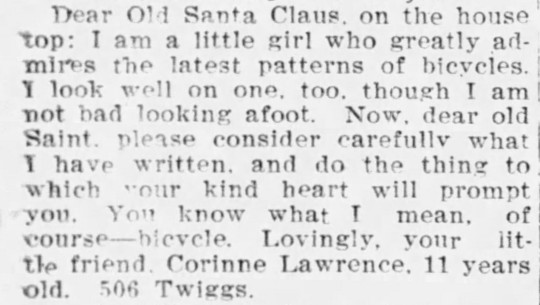
I will never be as charismatic as this child.
(source: The Tampa Tribune, December 22, 1901.)
#nat 20 on her persuasion roll#oddly enough corinne is buried in a cemetery that I've done extensive documentation work for#though I work primarily with unmarked burials so I'm not terribly familiar with the section she's in#dear santa#kids#1900s#bicycles#florida#tampa#history
678 notes
·
View notes
Text
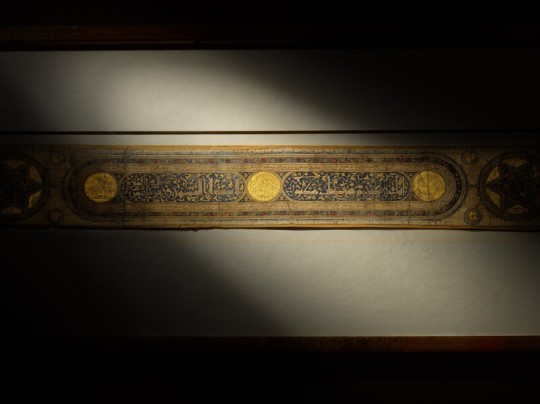


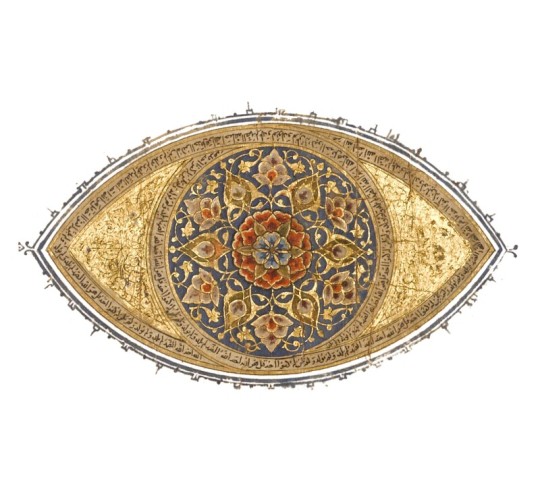

An illuminated section from a talismanic scroll Egypt, Mamluk, Mid-14th century
#An illuminated section from a talismanic scroll#Egypt Mamluk#Mid-14th century#calligraphy#ancient artifacts#art#artist#art work#art world#art news#archeology#archeolgst#history#history news#ancient history#ancient culture#ancient civilizations#ancient art#art history
157 notes
·
View notes
Text

#seriously the comment section on fb is MENTAL#black history month#minneapolis#minnesota#twin cities#downtown#travel#midwest#aesthetic#wanderlust
113 notes
·
View notes
Text
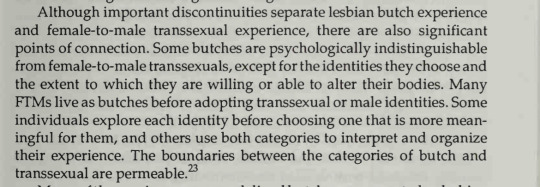
"Although important discontinuities separate lesbian butch experience and female-to-male transsexual experience, there are also significant points of connection. Some butches are psychologically indistinguishable from female-to-male transsexuals, except for the identities they choose and the extent to which they are willing or able to alter their bodies. Many FTM's live as butches before adopting transsexual or male identities. Some individuals explore each identity before choosing one that is more meaningful for them, and others use both categories to interpret and organize their experience. The boundaries between the categories of butch and transsexual are permeable."
-"Of Catamites and Kings: Reflections on butch, gender, and boundaries" by Gayle Rubin, The Persistent Desire, (Joan Nestle) (1992)
#lesbians#lesbianism#trans men#transgender#gender stuff#lgbt#lgbtq+#lgbt history#lesbian history#transgender history#transgender men#FTM#butch#history#the persistent desire#this section was so important and more young queers need to read this#and understand our communities have always overlapped#and will always overlap#the lines are blurry and barely there they arent walls
2K notes
·
View notes
Text
the arryn line has died out so many times they always have a backup line ready to be the next arryn, these bitches are just sooooo bad at living. everyone’s always picking on the starks for getting nearly wiped out but damn ned & cat really hunkered down and repopulated the hell out of the family tree, like the starklings aren’t doing that bad, meanwhile you just like, sneeze too hard in the direction of the eyrie and the whole arryn line is on the brink of extinction, but it’s okay, they follow strict osha guidelines in the vale and they have a protocol for this very common scenario
#it was like 3 separate times in the history PLUS harry harding where the narrator is like ‘yeah they had to just this random cousin out#their ass because the whole line died. all the sons And the daughters And the dad had no siblings’ LIKE WHY ARE THEY INCAPABLE OF KEEPING IT#GOING OMG#rani liveblogs asoiaf#house arryn#i am waiting for my fire & blood hold to come in 💀💀 i made little notes when i was listening to the targs section about things that#interested me or that i thought could be involved in plot/prophecy stuff so i listen harder for certain stuff during fire & blood#then it’s dunk & egg. i’ve been listening to a clash of kings between all this it’s just that the series are audiobooks i own & the#other things are ones i checked out so i have to listen to those Now. esp fire & blood that hold list was so long 😭😭 but audiobooks are#expensive i can only get so many!!!!#a song of ice and fire
2K notes
·
View notes